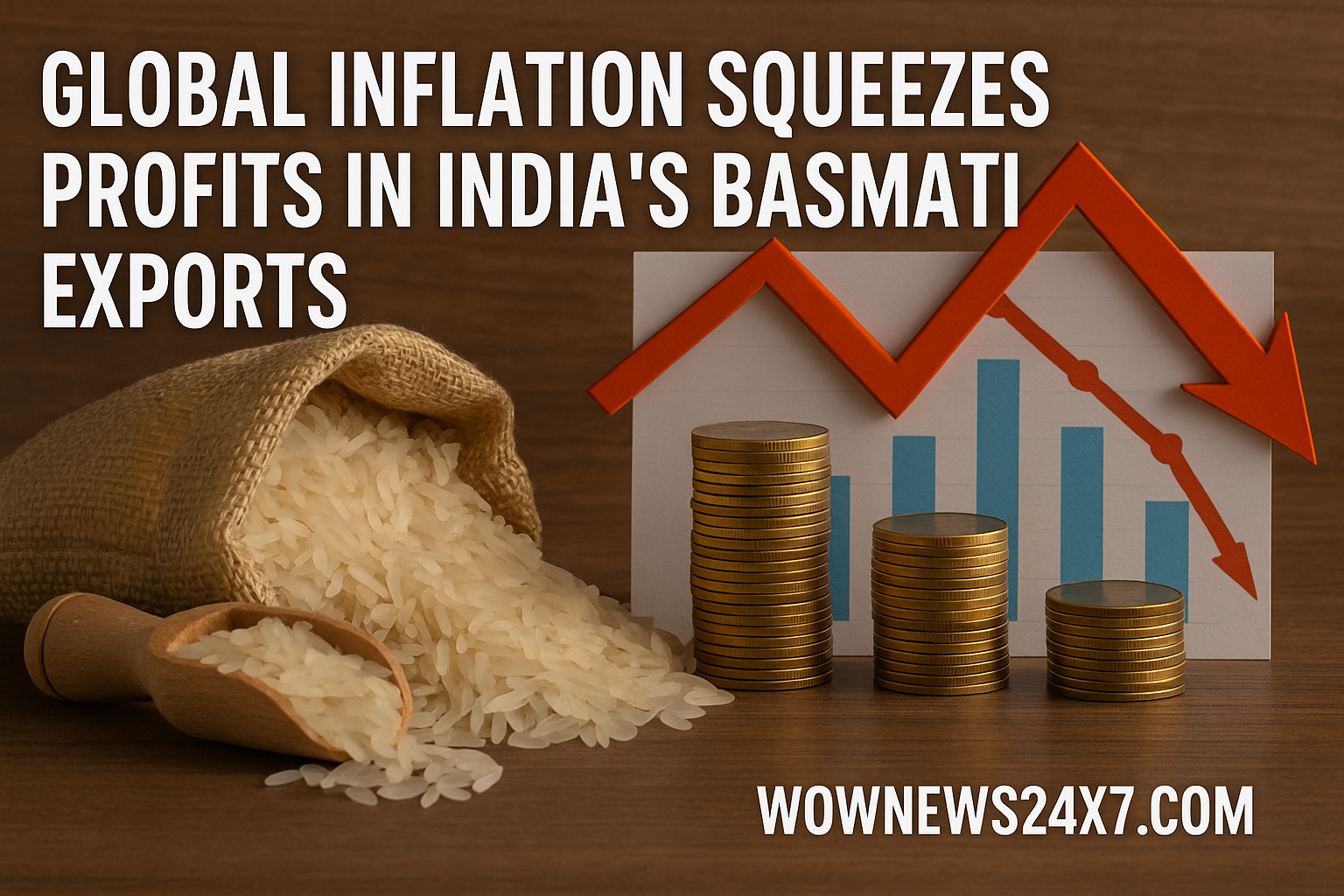India’s basmati rice exporters face shrinking profit margins despite high export volumes, pressured by rising input costs, logistic challenges, global inflation, and stiff competition. Currency fluctuations, elevated tariffs, and changing consumer preferences are reshaping the industry landscape, threatening India’s dominant position in global basmati markets.
Basmati rice, renowned worldwide for its distinctive aroma and premium quality, has long been a pillar of India’s export economy, accounting for over 70% of global trade. However, the economics behind this success are increasingly challenging. Export margins are shrinking due to a confluence of rising costs and market pressures that have heightened risk for Indian exporters.
Key Highlights:
Rising Input and Processing Costs: Inflation has pushed up prices for fertilizers, seeds, diesel, and labor in leading basmati-producing regions like Haryana and Uttar Pradesh, raising farm-gate prices and compressing exporter margins.
Surging Logistic Expenses: Although container freight rates have fallen from pandemic peaks, they remain about twice pre-pandemic levels. Higher packaging costs and port delays further eat into profitability.
Trade Policy Uncertainty: While basmati exports are unrestricted, the ban on non-basmati rice exports creates market ambiguities, delays contracts, and adds export risks affecting investor confidence.
Currency and Tariff Challenges: The relatively strong Indian rupee limits exporters’ price competitiveness against Pakistani counterparts, who benefit from a weaker currency and lower US tariffs (19% vs 61% on Indian basmati).
Dampened Global Demand: Inflationary constraints have reduced buying power, especially in West Asia and Europe, pushing buyers toward cheaper rice varieties and demanding stricter price terms.
Quality and Compliance Costs: Stricter pesticide and quality norms in markets like the EU increase testing and certification costs, adding to exporters’ burdens.
Despite steady export volumes exceeding 5 million tonnes in 2025, rising expenses and evolving market dynamics have eroded profitability. The basmati sector, vital for rural livelihoods and agricultural GDP, faces a critical juncture requiring adaptive strategies to sustain India’s leadership globally.
Sources: The Hindu BusinessLine, Dawn.com, Economic Times, LinkedIn Insights, Commodity Board of India, APEDA, Barkatrice.in.
